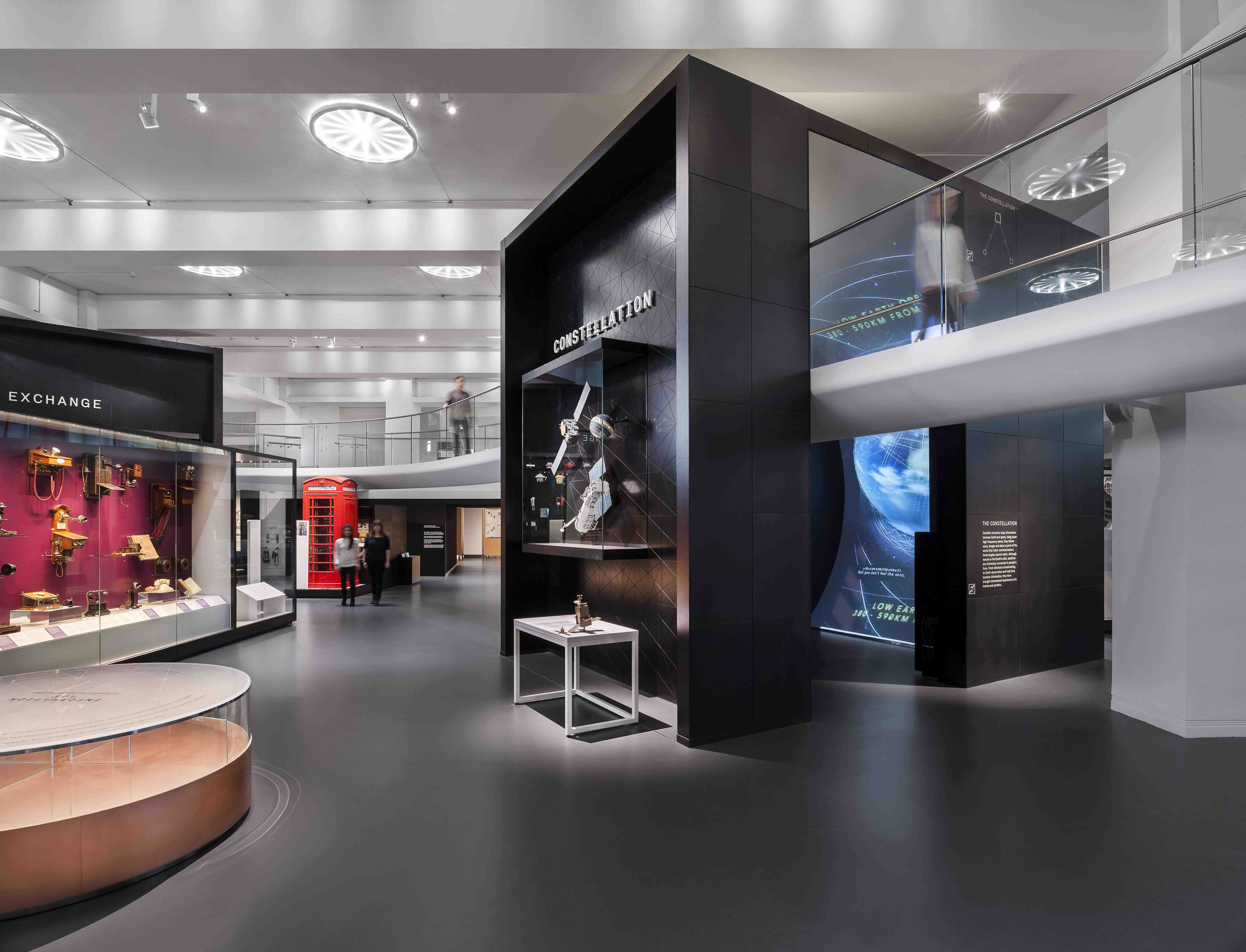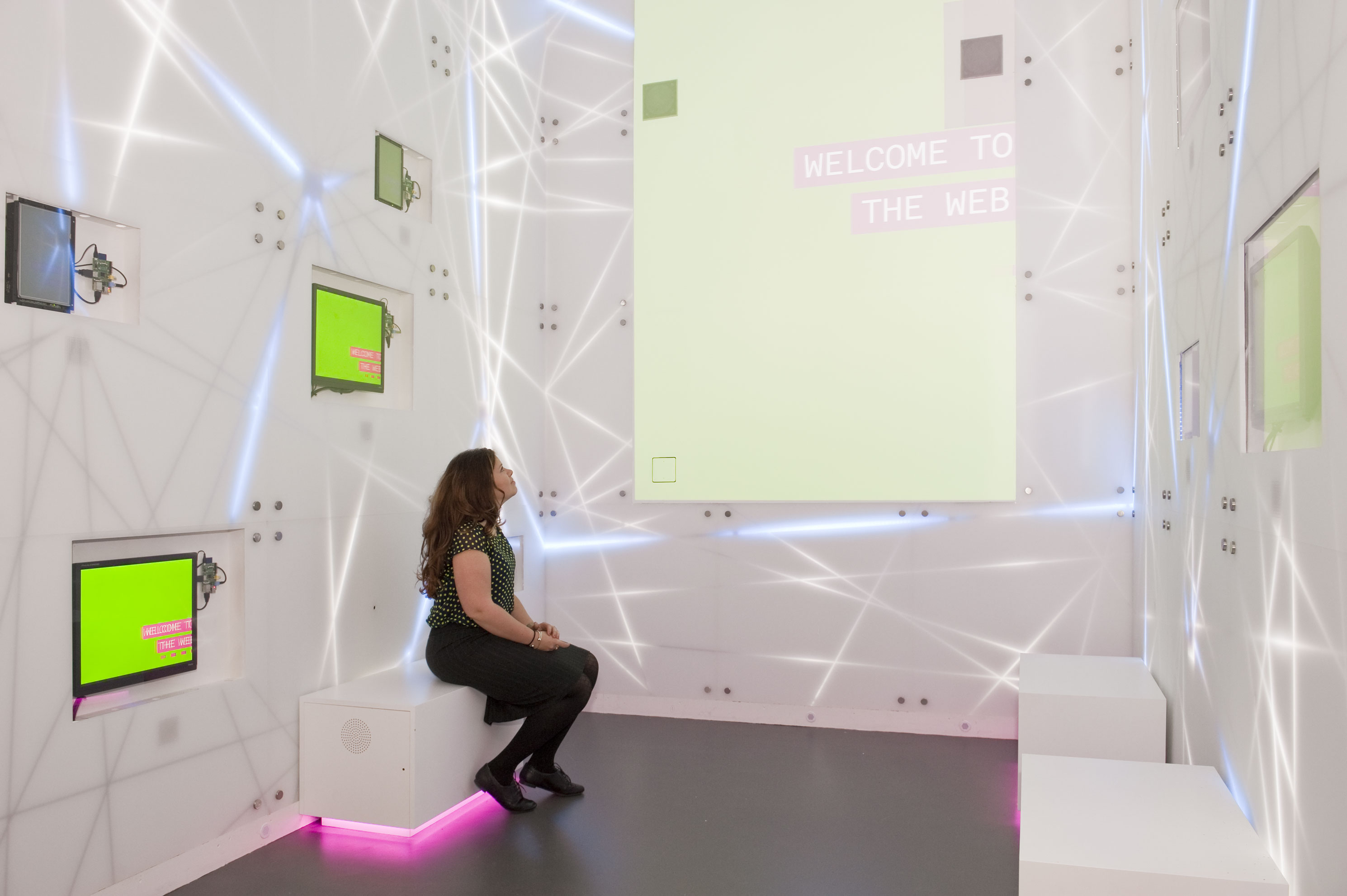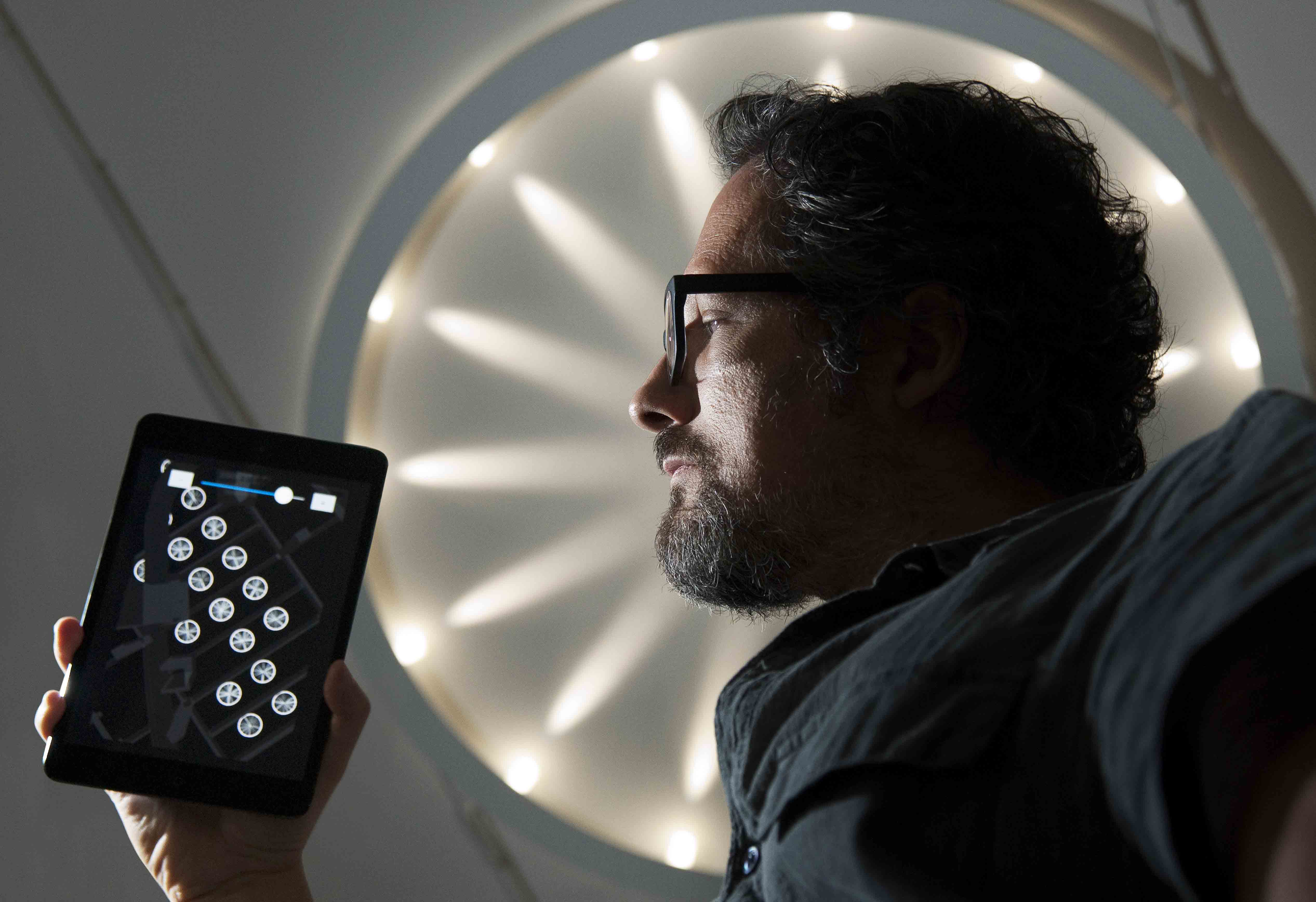Featuring over 800 objects and spanning 200 years of dramatic moments in the history of communication and information technology, the Information Age gallery provided us with the perfect opportunity to bring a new edge to storytelling through the most advanced digital technology. In each of the six areas of the gallery (Networks) digital elements work in harmony with historical objects to help increase visitors’ understanding and enjoyment of the Museum’s collections.

In a Science Museum first, the gallery features a suite of transparent interactive LCD screens that sit in front of significant objects from our collections (see one in action in the video below).These displays allow visitors to discover more about the various objects while using creative lighting to retain the object in central view.
A number of object display cases have been specially designed to include video screens. This enables important archive films to be presented alongside related objects and to form an integral part of the narrative within each case.
Visitors can also enjoy trying out a number of interactive replicas of historical objects, while sensors track their interaction with each object. As people use the model they can see in real time how the information is transmitted, demonstrating the invisible science behind the technology.
At the heart of each Information Age Network sits a Story Box, a large semi-enclosed space that brings the six gallery themes to life in surprising and creative ways.
Each Story Box allows you to engage in the various themes of the gallery, through the use of LEDs and video environments to multiple screen projections, mobile phone controlled animations and even a mechanical puppet theatre.

The Story Boxes were developed in collaboration with leading artists and thinkers including Olivier award-winning video designer Finn Ross, artist Matthew Robins, broadcaster Bonnie Greer and computer scientist Sir Tim Berners-Lee.
Throughout the gallery, people can use their mobile devices to find further content on the Museum’s website and can download a number of apps specially designed for the gallery.
Another highlight is Fiducial Voice Beacons, a digital art installation by BAFTA award winning artist Rafael Lozano-Hemmer. The artwork consists of a series of glimmering light beacons on the ceiling of the gallery, each containing a sound recording that is translated into a light sequence.

Visitors interact with the artwork by downloading a free app which allows them to listen to each recording or contribute with their own message. The Information Age apps and art installation are supported by Bloomberg Philanthropies.
Anne Prugnon is the New Media Manager for the Information Age gallery.
One comment on “Information Age: Bringing Old Technology To Life”
Comments are closed.
This looks like such a great gallery, interactive in a thought-provoking way. Hope I get to visit soon.